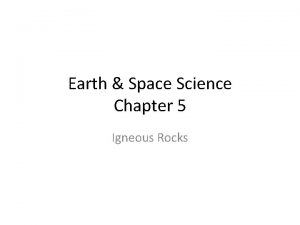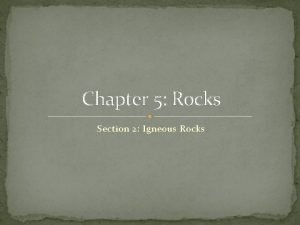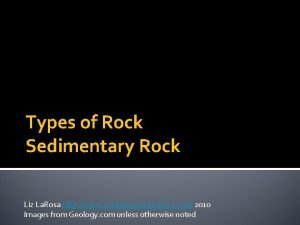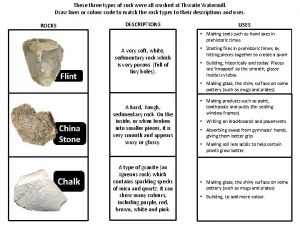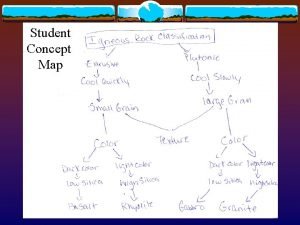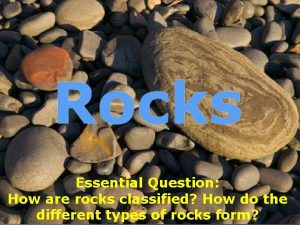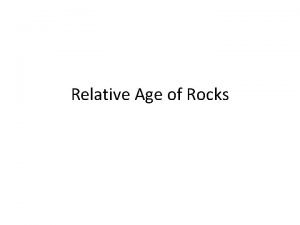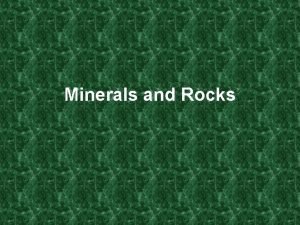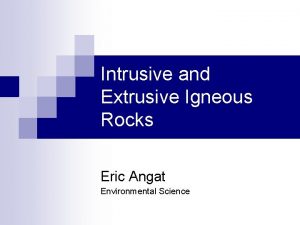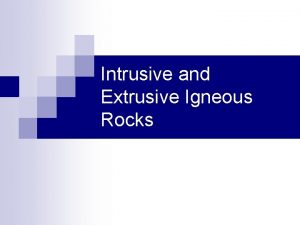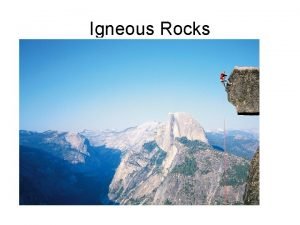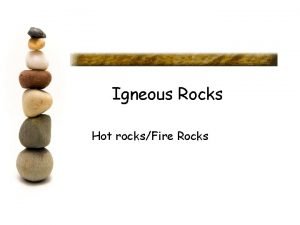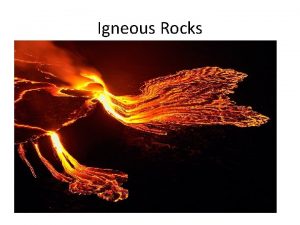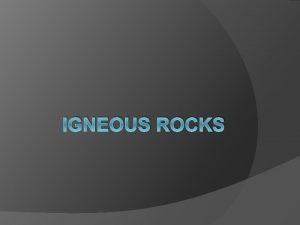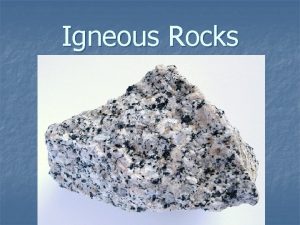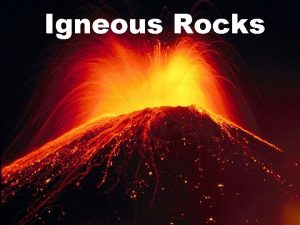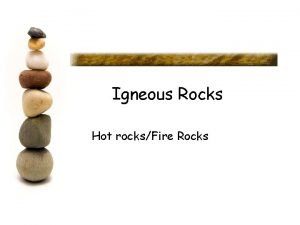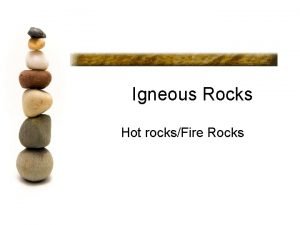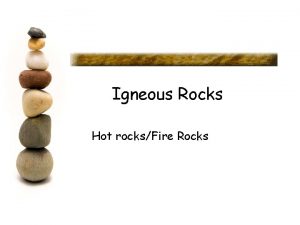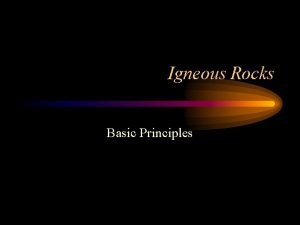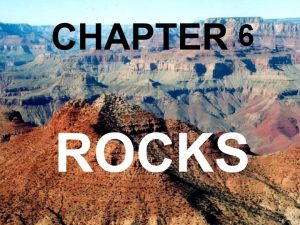Chapter 5 Rocks Section 2 Igneous Rocks Classifying
















- Slides: 16

Chapter 5: Rocks Section 2: Igneous Rocks

Classifying Igneous Rocks Origin Extrusive: formed from lava that erupted onto Earth’s surface (e. g. basalt) Intrusive: formed when magma hardened beneath Earth’s surface (e. g. granite)

Lecture Checkpoint 1 Question: What are the two types of igneous rock and what is the difference between them?

Lecture Checkpoint 1 Question: What are the two types of igneous rock and what is the difference between them? Answer: Extrusive and intrusive. Extrusive rocks are formed from lava that erupted onto Earth’s surface. Intrusive rocks are formed when magma hardens beneath Earth’s surface.

Classifying Igneous Rocks Texture Depends on the size and shape of its mineral crystals Intrusive rocks are usually coarse-grained because they cool slowly so their mineral crystals are large Extrusive rocks are usually fine-grained or glassy (obsidian) because they cool quickly so their mineral crystals are small or non-existent (obsidian)

Lecture Checkpoint 2 Question: How is the texture of extrusive rocks different from the texture of intrusive rocks? Why?

Lecture Checkpoint 2 Question: How is the texture of extrusive rocks different from the texture of intrusive rocks? Why? Answer: Extrusive rocks are usually fine-grained because they cool quickly above ground making their mineral crystals comparatively small. Intrusive rocks are usually coarse-grained because they cool slowly below ground making their mineral crystals comparatively large.

Classifying Igneous Rocks Mineral Composition Determines color (ex. Silica content affects how dark or light) Geologist make thin slices of a rock and study the crystals under a microscope to determineral composition

Uses of Igneous Rocks Useful because they are hard, dense, and durable Building materials (mostly granite) During ancient times: Egypt, Incas 1800 s and early 1900 s U. S. : bridges, public buildings, cobblestone Modern day: countertops, curbstones, floors, gravel (basalt) Other Uses Pumice – abrasive for cleaning and polishing Obsidian – sharp tools for cutting and scraping

Lecture Checkpoint 3 Question: Why can’t obsidian be used as an abrasive?

Lecture Checkpoint 3 Question: Why can’t obsidian be used as an abrasive? Answer: Because of its glassy texture.

Post-lesson Quiz 1. Which factor is not used to classify igneous rocks? a. origin b. size c. texture d. mineral composition

Post-lesson Quiz 2. Which type of igneous rock is formed from lava that erupted onto Earth’s surface? a. extrusive b. intrusive c. extrinsic d. intrinsic

Post-lesson Quiz 3. Which type of igneous rock is formed when magma hardens beneath Earth’s surface? a. extrusive b. intrusive c. extrinsic d. intrinsic

Post-lesson Quiz 4. Which type of igneous rock has a coarse-grain? Why? a. extrusive because it cools slowly b. extrusive because it cools quickly c. intrusive because it cools slowly d. intrusive because it cools quickly

Post-lesson Quiz 5. Which is not a characteristic of igneous rocks that makes them well-suited to make tools and building materials? a. hard b. dense c. durable d. light
 Rock cycle song (sedimentary igneous metamorphic)
Rock cycle song (sedimentary igneous metamorphic) Igneous rock to metamorphic rock
Igneous rock to metamorphic rock Chapter 5 igneous rocks
Chapter 5 igneous rocks Chapter 5 igneous rocks
Chapter 5 igneous rocks Concept map for igneous rocks
Concept map for igneous rocks Topography associated with igneous rocks
Topography associated with igneous rocks Characteristics of igneous rocks
Characteristics of igneous rocks Rocks concept map
Rocks concept map Non-banded grains
Non-banded grains Concept map about magma
Concept map about magma Relative age of rocks diagram
Relative age of rocks diagram Luster of igneous rocks
Luster of igneous rocks Is igneous rock intrusive or extrusive
Is igneous rock intrusive or extrusive Pumice extrusive or intrusive
Pumice extrusive or intrusive Venn diagram of intrusive and extrusive igneous rocks
Venn diagram of intrusive and extrusive igneous rocks Igneous rock
Igneous rock What are the physical properties of igneous rocks
What are the physical properties of igneous rocks


